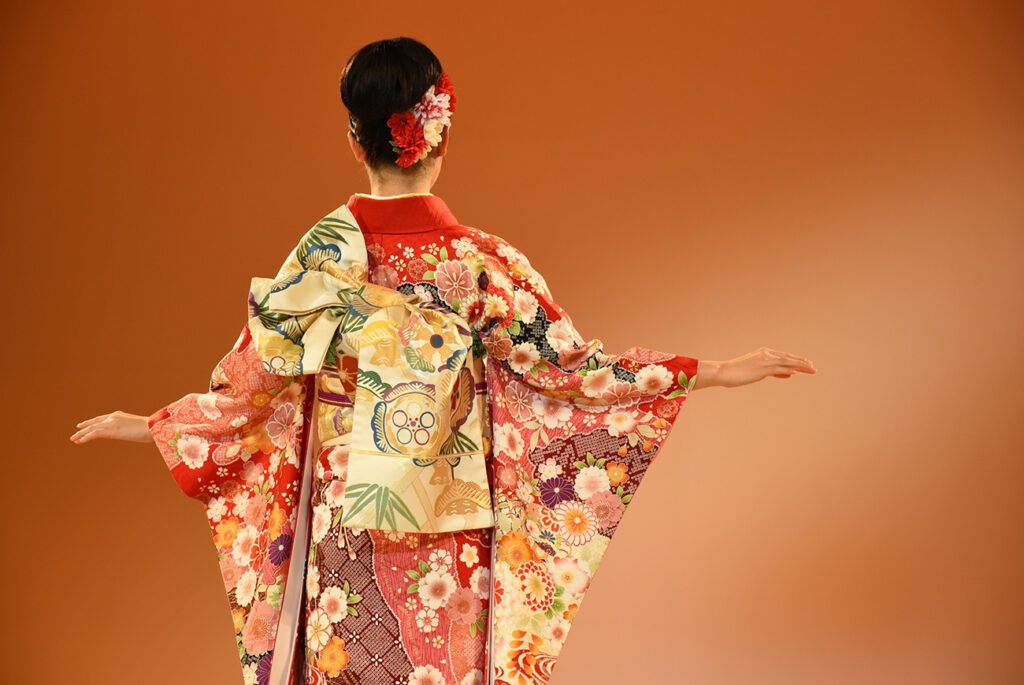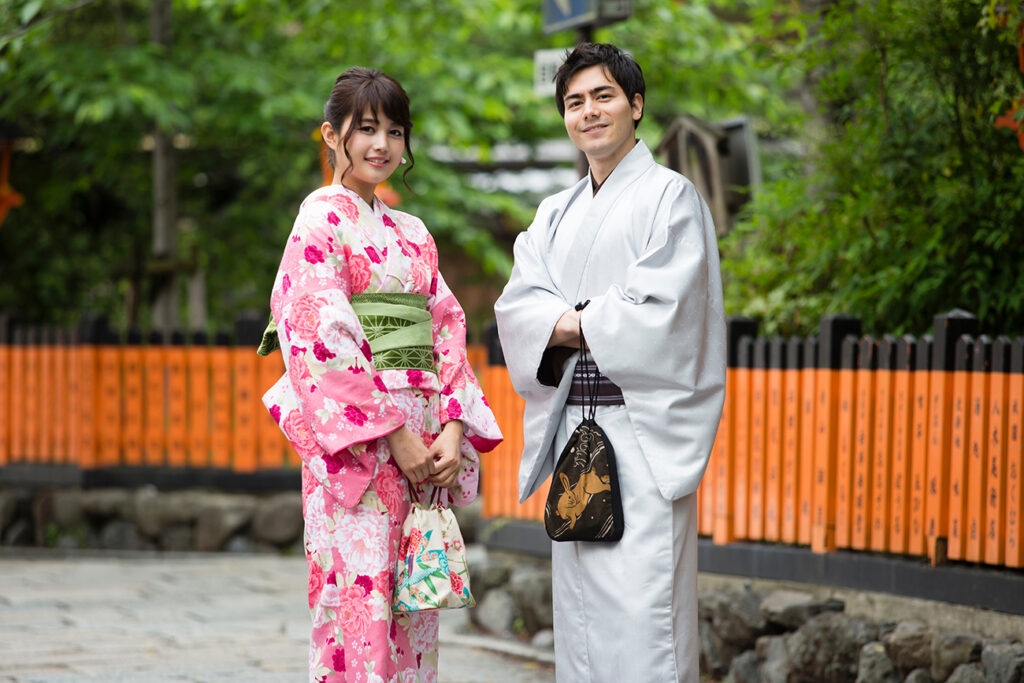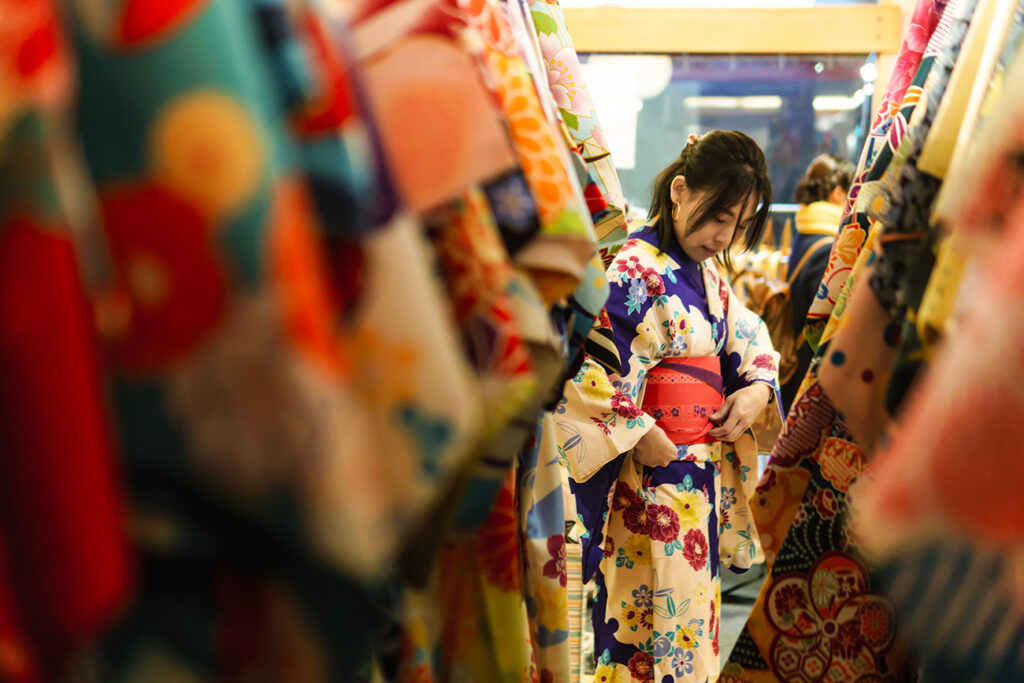
Discovering the Kimono: Japan’s Traditional Garment
The kimono, Japan’s national dress, captivates travelers with its elegance, deep cultural significance, and rich history. Many visitors to Japan dream of wearing this traditional garment, but how much do they know about its cultural and historical background? This article explores the kimono, differentiates it from the yukata, and delves into its history, culture, and modern-day popularity.
What is a kimono?
A kimono is a traditional Japanese garment that signifies various aspects of the wearer, such as age, gender, and the formality of the occasion. The term “kimono” literally means “thing to wear,” reflecting its historical use as daily attire in ancient Japan. Kimonos offer insights into local fashion, lifestyle, and cultural periods, making them a fundamental piece of Japanese identity.
1,700 years of cultural tradition
Origins and Evolution:
- Kofun Period (300-538 AD): Prototypes of the kimono were introduced from China.
- Heian Period (794-1185): Multi-layered kimono for women and color-coded ranks for men emerged, with seasonal and botanical color combinations.
- Edo Period (1603-1868): Kimono sleeves lengthened, and the obi (sash) became a prominent feature. Sumptuary laws regulated extravagant displays of shibori (tie-dye) and shishu (embroidery), leading to the invention of yuzen (resist dyeing).
Modern Adaptations:
- Meiji Period (1868-1912): Western clothing influenced daily wear, though kimono remained for private life and formal occasions.
- Taisho Period (1912-1926): The introduction of meisen, a more affordable and vibrant silk, paralleled the role of jeans in Western fashion.
- World War II: Kimono use declined as they were seen as unpatriotic due to fabric demands.
Types of kimono for women
- Furisode: The most formal kimono for young, unmarried women, featuring long sleeves and colorful patterns. Worn at Coming of Age ceremonies and weddings.
- Kurotomesode: The most formal kimono for older women, with a black background and designs along the hem, worn at formal events.
- Homongi: Semi-formal kimono with motifs flowing across specific areas, worn by friends of the bride at weddings or at formal parties.
- Komon: Casual kimono with repeating patterns, suitable for daily errands or small celebrations.
The key differences of kimono for men
- Simpler design compared to women’s kimono.
- Sleeves are mostly attached to the body.
- Typically subdued, dark colors and matte fabrics.
- Narrow obi tied at the waist.
- Simple, solid-colored footwear like geta and zori.
Kimono accessories
- Obi: Decorative sash, varying in width and length based on formality.
- Hakama: Traditional trouser-skirt, worn at graduations, weddings, and in martial arts.
- Haori: Kimono overcoat, essential in winter.
- Geta and Zori: Traditional sandals, with geta featuring elevated wooden bases and zori being flat and made of various materials.
- Tabi: Toe-divided socks, commonly white for formal occasions.
What is a yukata?
A yukata, meaning “bath clothes,” is a casual, unlined garment typically made of cotton, linen, or hemp, suited for summer. Unlike the kimono, the yukata has a relatively recent history, emerging in the Edo Period due to changes in bathing habits and sumptuary laws. Initially worn by the upper class in baths, it spread to all classes, evolving into the modern-day yukata worn for festivals, casual outings, and at ryokan (Japanese inns).
Yukata vs. kimono
- Sleeves: Yukata sleeves are shorter, never exceeding 50 cm.
- Seasons: Yukata are summer garments, while kimono are suitable for all seasons.
- Occasions: Yukata are worn for informal occasions, whereas kimono are for formal events.
- Accessories: Yukata require fewer accessories and are paired with a casual obi, while kimono involve multiple strings, formal obi, and tabi socks.
After World War II, kimonos became confined to formal wear and Japanese arts. However, the 1990s saw a resurgence in kimono popularity, driven by global interest in Asian fashion. The 2000s witnessed a yukata boom and the rise of secondhand kimono shops. Today, kimono wearers often bypass traditional shops, with online platforms and modern business models thriving. There are rental opportunities. If you stay at a Ryokan (traditional Japanese inn), yukata robes are provided for guests to wear. Yukata is inexpensive and fun to wear when you join in a summer festival.
The kimono, a symbol of Japanese culture for over 1,700 years, continues to evolve, blending tradition with contemporary trends and making it accessible to new generations.


